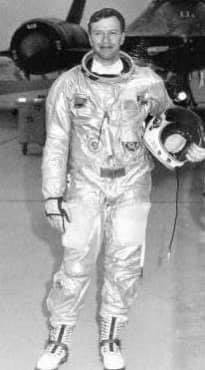A U-2 pilot tells a scary story that took place during the Cuban Missile Crisis
August 1955 saw the first flight of the original U-2A, which was built by Kelly Johnson and the Lockheed Skunk Works in total secrecy. Early flights over the Soviet Union in the late 1950s provided the president and other US decision-makers with key intelligence on Soviet military capability.
The Cuban Missile Crisis began in October 1962 when the U-2 captured images showing the Soviet Union stockpiling nuclear missiles for offensive use in Cuba.
The fear of World War III
Everyone was terrified of a third world war following the Cuban Crisis. Situated barely ninety miles from Florida, the island of Cuba had installed nuclear missiles that might reach the United States.
On Oct. 23, 1962, Butch Sheffield’s daughter remembers his father telling her mother to go to the commissary and buy as much food as possible. At that time, we lived in Texas at Carswell Air Force Base (AFB). Butch Sheffield, who was an SR-71 Reconnaissance Systems Officer, as he was leaving, said to fly the B-58 Hustler bomber on red alert.
Buddy Brown, one of only 12 men in the world who flew both the U-2 and the SR-71
They lived at Beale AFB seven years later, and Buddy Brown was their neighbor. He was one of the only 12 men in the world who flew both the U-2 and the SR-71. The following is an interview by Buddy Brown given ten years ago to Oakridger.
‘Now let me say something about that Cuban Missile Crisis. This is probably as close as this nation has ever come to being in World War III,’ Brown began. ‘When I say close, it was probably about that far from pushing a button to launch a nuclear torpedo,’ he stated, as he gestured with two of his fingers only a few inches apart.
The crew of a Soviet submarine thought that World War III had started
‘I was at a 50-year thing at George Mason University about a year ago, and they were celebrating (the 50th anniversary of) the Cuban Missile Crisis. Since I was one of the pilots, they had me talk to the group there about that. I sat next to Sergei Khrushchev — (Soviet Premier Nikita) Khrushchev’s son — who was around 30 years old during the Cuban Missile Crisis and is now a professor at Brown University. But he was telling us that the Soviets had some diesel subs inside the line there in case nuclear war started.

‘Well, this one person running the submarine thought we were, in fact, at war — because they didn’t have any contact,’ Brown recalled. ‘They had a bunch of naval ships out there and, fortunately, somebody with a cooler brain stopped him from doing that — but he was about three inches from pushing and launching one of those nuclear torpedoes at one of our naval ships out there.’ He paused and stated: ‘Now that would have started it right there.’ The Soviets had, in Cuba, about sixty 1-megaton weapons that were ready to go. Cruise missiles and a few other things.’
1 MEGAton nuclear weapons
Brown concludes;

‘To make a comparison, the ones that they set off during World War II at Hiroshima and Nagasaki was about 15 kt (kiloton) — now we’re talking about 1 MEGAton and they were going to use them. Well, fortunately, none of that happened and it ended up that we didn’t go to war; but it was probably the closest this nation has ever been.’
Check out Habubrats SR-71’s Twitter profile and Born into the Wilde Blue Yonder’s Facebook page for further Blackbird photos and stories.
Photo by U.S. Air Force, CIA and U.S. Navy

